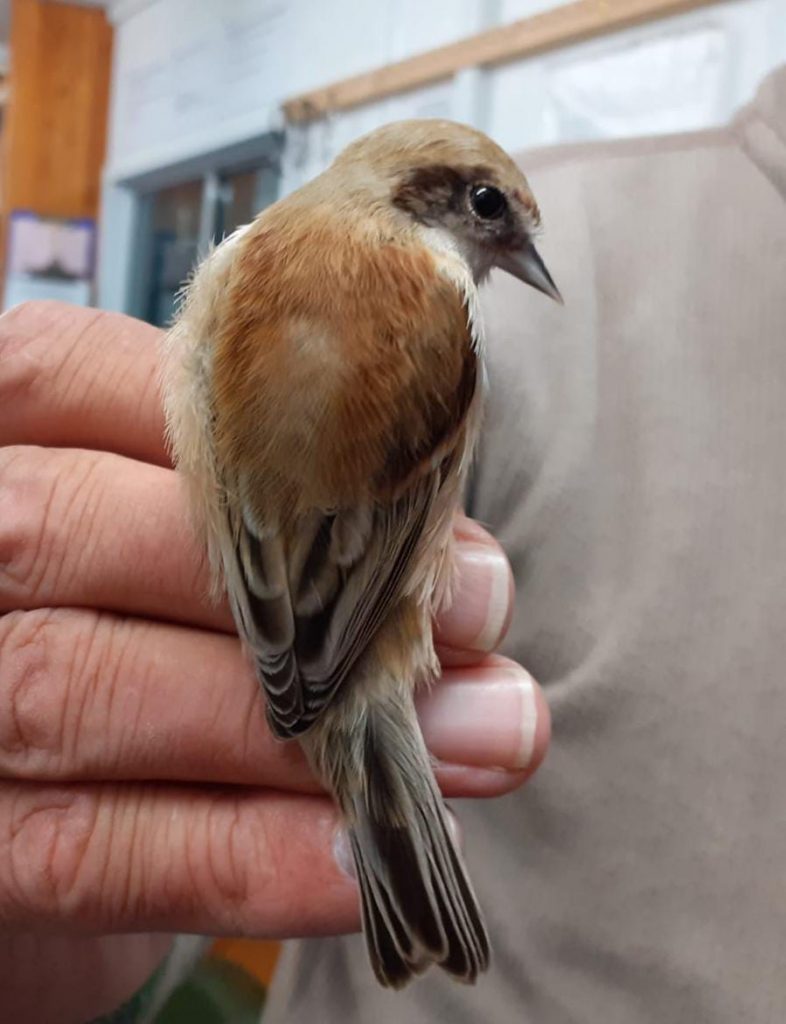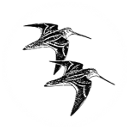Observations

And the award for Best Bird goes to…
A review of the observations of November – December 2023
The winner of Best Bird of the Period was clear: the first year male Penduline Tit that Alan Harris caught on the evening of 10th November on the Bund (a dry ridge in the reedbed at the back of the Scrape) whilst netting for Reed Buntings going to roost.
This was the second Rye Meads record after the bird that stayed for a day on 4th April earlier in the year, and clearly a different bird, seeing as it would have been hatched after that earlier record.
It seems clear that Rye Meads is becoming less attractive to wintering diving ducks. The top count of Pochard was four, and of Tufted Duck, just 13. For context, just ten years ago, the equivalent counts were 15 and 164 respectively.
Fortunately, the dabbling ducks seem less affected. Peak counts included 143 Shovelers, 163 Gadwalls and 92 Teal. There was also a Pintail on the last day of the year; one Shelduck intermittently in late November and early December, as well as up to four Egyptian Geese. Talking of geese, there were unusually large flocks of 70 Greylags on two days in November.
Our first Cattle Egret since 2020 made an appearance flying south. After probably the same bird on three dates in April 2019 and the one in 2020, it’s almost a surprise that this is only our fifth record.
Almost as big a surprise was a Woodcock which flung itself into one of our nets at dusk one November day. They are more or less annual here in winter, but as they hide up by day in places we are unlikely to go, are surely under-recorded. This one was only our sixth to be caught and ringed, the last one being as far back as 1999.
As has become almost routine, the loafing Lapwing flock that roosts by day on the islands in No. 1 Lagoon regularly contained one or two hundred birds, and peaked at 340.
Thanks to thermal imaging cameras, particularly that wielded expertly by Rob Murray, it is now possible to both survey and to catch Jack Snipe in the meadows. These birds, being perfectly camouflaged, sit very tight until you are right on top of them. The camouflage works very well on an observer with the naked eye, but does nothing to help them hide from a thermal image. So it’s been interesting that although we’ve not counted more than 16 on any one day, we’ve caught 34 different individuals over the period. Are these birds simply moving about the immediate area, or are they moving through? If more retraps are made later this winter it might help answer this question.
Large numbers of Black-headed Gulls also roost by day with the Lapwings. Counts of 100-200 were not uncommon, and the biggest count of the period was 370. Other notable gull counts, often on roost flights south, included 30 Herring Gulls and 80 Common Gulls.
Whilst Rob’s rummagings in the meadow for Jack Snipe is very useful in itself, it was doubly pleasing that on one such visit he flushed a Short-eared Owl. This is by no means an annual winter visitor to Rye Meads – there have been just 18 years since 1960 when it has been recorded – so it was excellent to see one again.
A bird that doesn’t often feature in these reports is Stock Dove. They are always present, never in large numbers, a seeming constant. However, the discovery of a roost in the round tanks on the Works with a peak count of 103 gave us by some distance our record counts of this species..
And the green menace is still advancing… A flock of 15 Ring-necked Parakeets was our second largest count to date.
Chiffchaffs were present throughout, mostly in numbers from two to five birds, but 11 were found one day in December – an influx or just that we happened to find more of the birds regularly on site? There were also records of three and two Blackcaps on two dates in December. Ten Goldcrests were found in early November, with two or three regularly thereafter.
There were regularly a couple of hundred or so Starlings in November, with roosts in the reedbeds particularly at the Scrape, with the biggest count being 1,160. They must have found an alternative site, as there were no counts above 20 birds in December.
There were good numbers of winter thrushes in November: up to 30 Blackbirds, irregular flocks of 20-40 Fieldfares, with 245 passing over to the west on 11th, and more regularly 40-60 Redwings with a maximum count of 110. Into December, and numbers fell away substantially with the last of the berry crop consumed. There were however only one or two Song Thrushes counted throughout, and although it can be easy to miss birds in a flock of Redwings; it seems likely however that there were just our resident birds present.
In the meadows, there was a single and a pair of Stonechats present on two dates in November, and our wintering Meadow Pipits were present in small numbers throughout, with a maximum of 25.
Finally, there were few finches, as is sadly usual these days. Notable records include a now rare single female Bullfinch, one to three Lesser Redpolls on four dates in November, and a single Siskin. There were a few Yellowhammers assembling to roost in the reeds, the peak being 25.
For more information on observations and ringing, delivered much more up to date in our bi-monthly Bulletin, why not become a Friend of RMRG?
